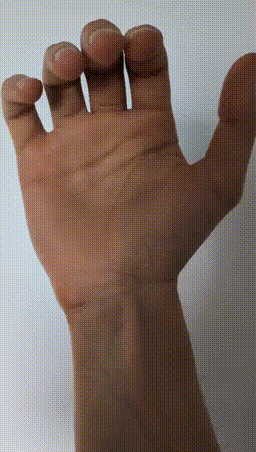I wrote up my thoughts on Anton Oparin’s technique and the Universal Guitar Technique video in “that” thread, but it seems that it has been deleted. I didn’t save a copy of what I wrote, some of what I write here might be similar.
Let me make it totally clear that I think Anton is an extraordinary player. I’ve been very impressed by his playing since videos of his playing first began to appear online when I was a teenager.
I haven’t seen Anton’s instructional materials. I’m sure that he knows what he’s doing and that those who are interested in pursuing the technique would find his instruction insightful. I think it’s possible for others to discover and develop similar approaches for themselves, but I’d expect that Anton’s instruction would accelerate the learning process significantly.
I was very focused on strict alternate picking was a teenager. I was able to develop RDT based mixed and double escape mechanics by thinking about picking geometrically. My form was very capable, I was able to play pieces by Paul Gilbert and Steve Morse cleanly and up to tempo (much of the same material that Anton started on).
I may have been swiping in some situations (I really have no way of knowing), but I’m confident that I wasn’t swiping in other situations. I remember very clearly that I was upset that I couldn’t get the Gilbert lick to “snarl” the way it does when Paul plays it. It turns out that the snarl was swiping noise, and I was upset because I wasn’t swiping (at least not audibly). I was upset because I wasn’t swiping, but I didn’t know what swiping was. At least, I didn’t know it could be done well without the performer realising.
Anton is significantly better at alternate picking than I ever was, but there are some clear similarities between our forms. My form has the same wobble that Anton calls the “wrist dance.” It has the same percussive attack and dynamic quality, and it demands that I pick directly through the string and not allow the string to deflect my picking path. I had a notebook full of diagrams and geometric derivations, including the figures of 8 that have been mentioned above (also escape angle vs. pick depth, effective radius of double-escape movements, the effects of lever length, etc).
I was never at the level of alternate picking that Anton has achieved. However, I don’t think it’s unreasonable to think that I could have achieved some of the things he is uniquely capable of, if I had shared his goals and his committment to the technique.
Personally, I was never satisfied with the technique. It is not totally compatible with my personal goals and my preferences. My goal has always been to develop my own vocabulary which manifests the players who have inspired me as clearly recognisable influences.
I like the characteristic tone and attack in some contexts, such as Paul Gilbert and Steve Morse influences lines/patterns, but I don’t enjoy it in other situations. I don’t think the tone or attack really works for Eric Johnson or Shawn Lane influenced picking licks. I don’t feel it blends well for Allan Holdsworth or Brett Garsed inspired legato lines. I feel like the dynamic is much too hard for crosspicking rhythm patterns.
Also, I think it’s important to understand that playing the guitar is a kinaesthetic experience. We play what we think sounds best of what feels available to us. Every technique informs a mechanical intuition, and becoming familiar with that intuition is a major aspect of manifesting an inspiration as an influence.
In my experience, the mixed-escape strict alternate picking style I developed didn’t provide the mechanical intuition to guide me toward my goals.
As minor nitpicks, I don’t feel that the form allows for totally seamless integration of hybrid picking, and I don’t feel that it allows for picking with the vibrato bar held loosley in hand.
Anton’s technique is clearly exceptional. I believe his criticisms of other techniques are valid, and that his technique is likely optimal when judged on the criteria he used in his Universal Technique video.
However, I believe those criteria are subjectively chosen and are based upon his personal goals and preferences. Other players may value other criteria based upon their personal goals and preferences. I don’t believe in Universal Technique, I believe there is enough variation in goals and preferences among guitar players that many would be better served with other approaches.
None of this is to diminish Anton or his technique at all. I just want to share my own personal experience with a similar mixed-escape, strict alternate picking approach. I want to encourage others to think on what their goals and preferences are, and how the techniques they pursue serve those ends.


 I was even thinking of DM’ing you and asking you how you even came up with your wrist motion.
I was even thinking of DM’ing you and asking you how you even came up with your wrist motion.